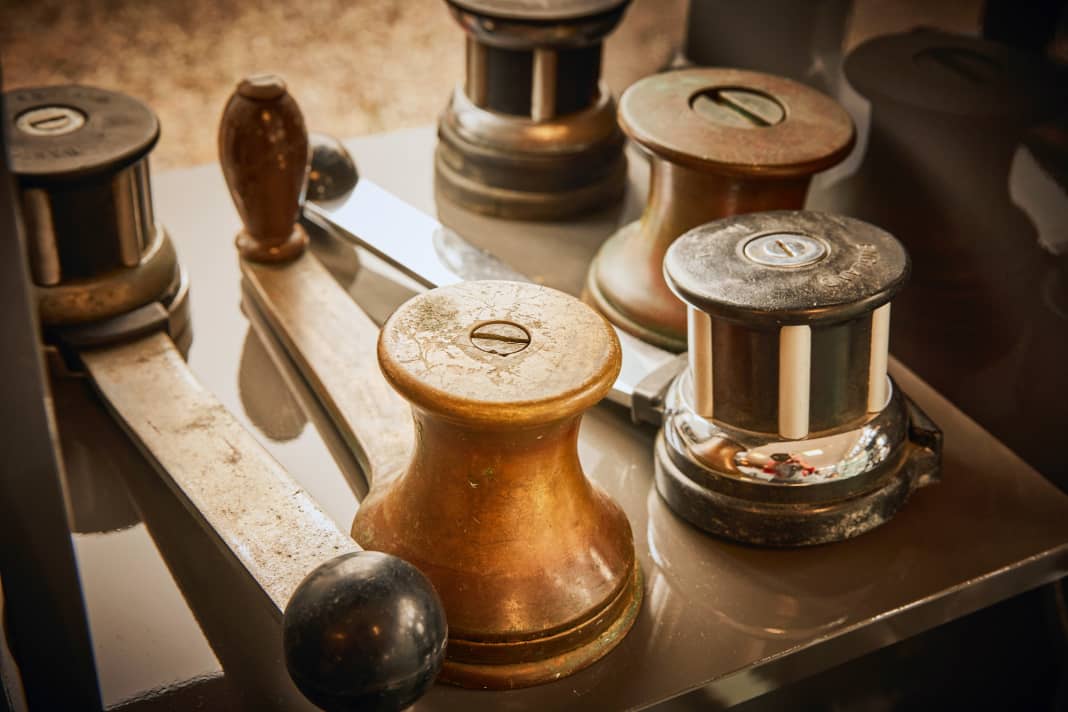





A large proportion of the force exerted in sails is tamed by winches. If code zero or spinnakers are used, this quickly adds up to several hundred kilograms of pull on the winch. Despite this, it often receives little attention. The manufacturers' maintenance intervals also vary greatly, ranging from several times a season to every two years. As the winches usually do their job without complaint, a missed maintenance appointment is often not a problem, especially as use on a cruising yacht does not usually overtax the technology.
However, as a minimum solution, the owner should occasionally turn the drum without a load and listen: If the clicks of the pawls sound nice and regular, everything should be fine. If you hear a double click or nothing at all, you need to act quickly, as this indicates that one or more pawls are not engaging. This is the worst case, as the winch will turn backwards under load. It then no longer fulfils its purpose and also threatens to injure crew members with the whirling crank.
Abrasive instead of lubricant
The malfunction of a pawl can have several causes: a broken spring, for example, or old, resinified grease that sticks to the pawl. If the grease loses its lubricating effect, the entire pawl also runs sluggishly. Together with dirt dissolved in the grease, the lubricating film then acts more like an abrasive paste, and the wear on the bearings increases.
Maintenance helps against this. This essentially involves cleaning and greasing. To do this, the winch is dismantled into its component parts. The easiest way to do this is with an instruction manual. These can be obtained online or by asking the manufacturer or dealer. This is also the case with the Lewmar Wavegrip shown here. This was produced from the mid-eighties; at Sailtec the German dealer in Hamburg, has the right maintenance kit and tips. Diesel is recommended here as a dirt remover.
Dealer Peter Kohlhoff, who sells Andersen winches, recommends brake cleaner because it is easier to dispense. When it comes to grease, however, you can't go wrong with the product in the maintenance kit.
Liqui Moly winch grease is also suitable and is available in DIY stores, for example. It is important that it does not contain any mineral oil components that saponify with seawater. Manufacturer Lewmar recommends oiling the pawls instead of greasing them to prevent them from sticking.
Be sparing when applying the grease, too much lubricant can clog drainages in the ratchet gear, for example, and then water will no longer drain away. During disassembly, a cardboard box can help to ensure that nothing gets lost. However, it is a hindrance when reassembling, as paper keeps the coaming free of grease.
Fresh pawls and replacement springs should be in stock
Once the winch has been dismantled, the springs of the pawls should also be replaced. It is advisable to procure replacements as a precautionary measure, as the springs tend to spring out during disassembly. Even if the winch fails at sea, it is a good idea to keep spare springs in your toolbox. Fresh pawls should also be on board. For particularly tough use, for example on larger regatta boats, Lewmar offers the so-called Super Pawl. They are labelled with an S and are more resistant.
On a cruising boat, replacement every one or two years is sufficient. Damage to the winch can be prevented by correct operation: If there are too few windings of sheet on the drum, the entire load goes onto the deflector on the selftailer. If the force is too great, the stripper ring breaks and the winch works more sluggishly. The part can be replaced. Replacements are often available even for old winches.

